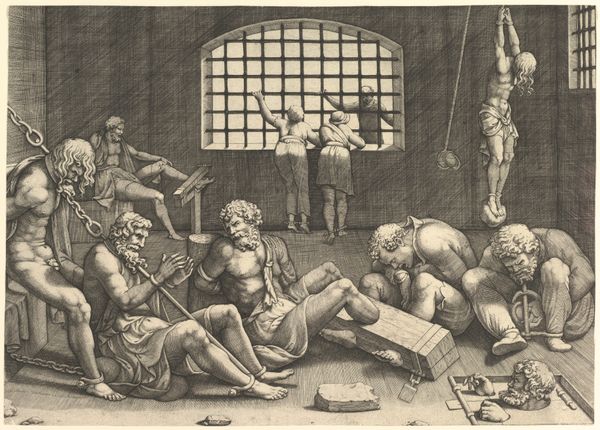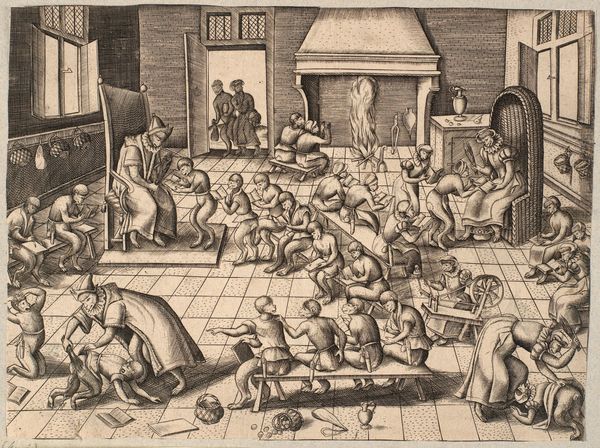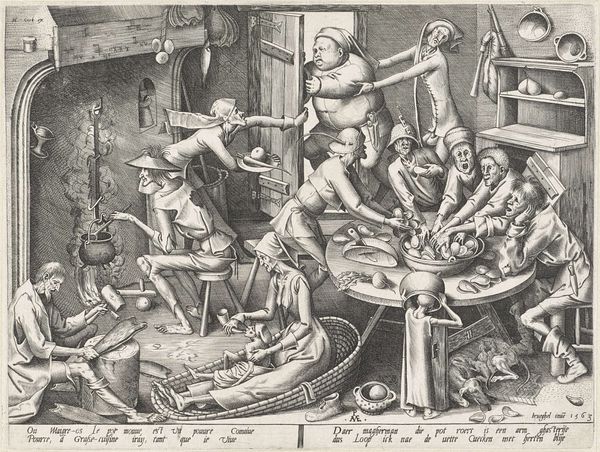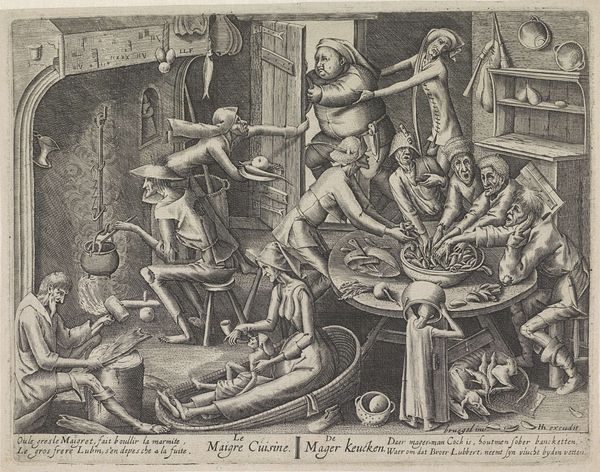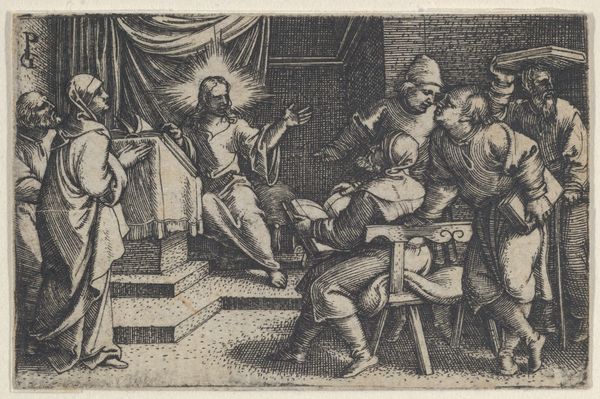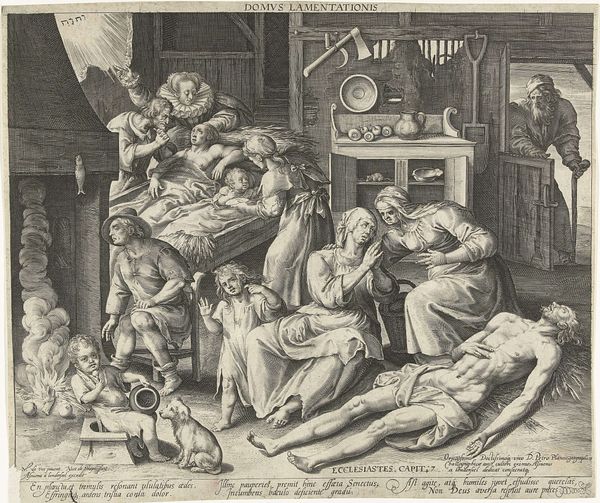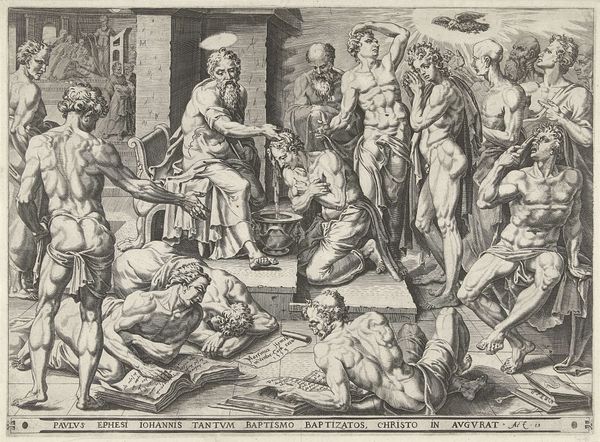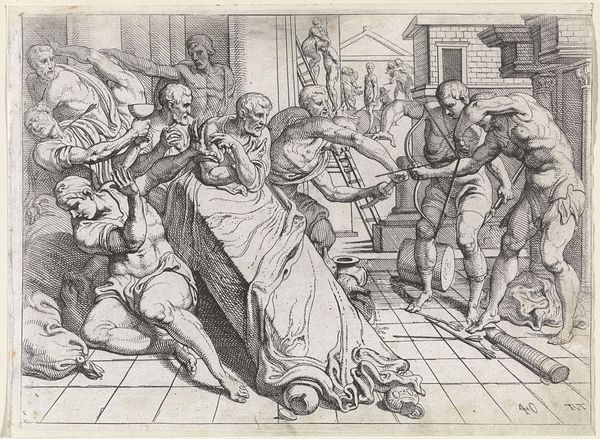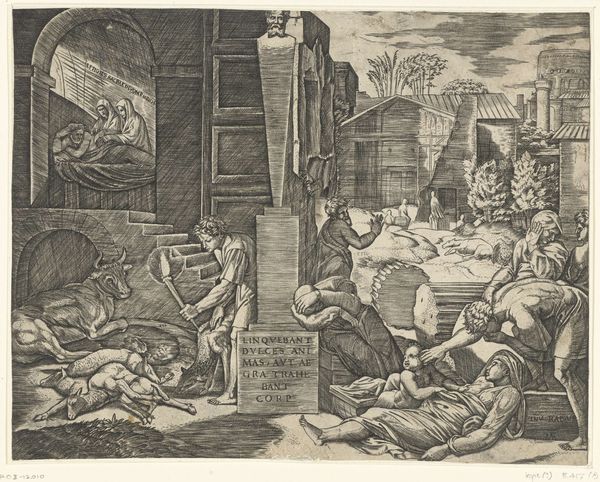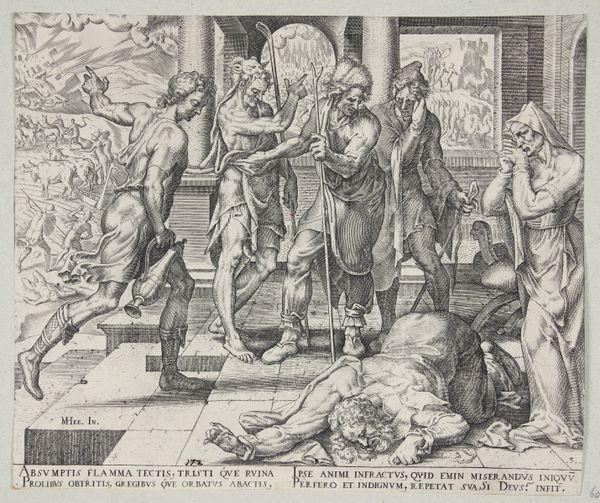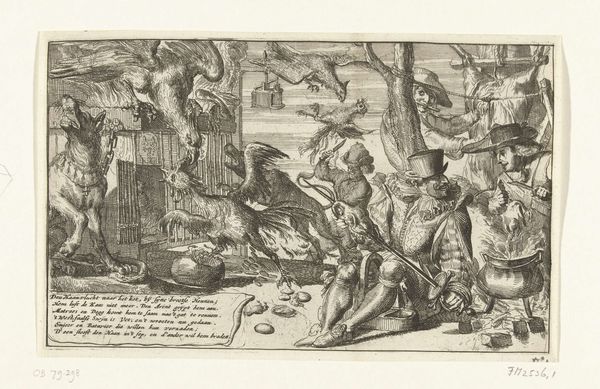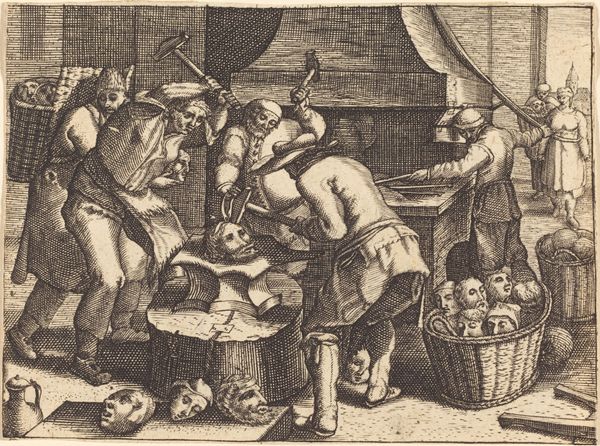
drawing, print
#
drawing
#
medieval
#
narrative-art
#
baroque
# print
#
mannerism
#
figuration
#
11_renaissance
#
history-painting
Dimensions: sheet: 10 11/16 x 16 3/8 in. (27.1 x 41.6 cm) borderline
Copyright: Public Domain
Editor: This print, called "The Prison," dates from sometime between 1500 and 1700. The artist is unknown. It definitely evokes feelings of confinement and suffering. What do you see in this piece, beyond that initial impression? Curator: This image viscerally depicts the socio-political realities of its time, particularly the structures of power and punishment. Consider the prison as not merely a physical space, but a manifestation of social control. How do the various figures within the scene embody different aspects of oppression, and perhaps, resistance? Editor: I see a hierarchy. Some prisoners are chained, others seem almost relaxed. Then there's the person hanging from the ceiling. It seems to point to differing levels of power, even within the incarcerated. Curator: Precisely. Let's delve into the historical context. This image was created during a period of significant social upheaval, rife with religious persecution, class conflict, and burgeoning colonial expansion. How might these historical forces have shaped the artist’s perception and representation of justice and imprisonment? Consider who benefitted and who was punished. Editor: I hadn't thought about the broader context. It makes me wonder, were these images used as propaganda, or protest? Who was the intended audience? Curator: It’s essential to question the role of the artist within this system. Were they complicit, critical, or somewhere in between? The ambiguity of their stance can reveal much about the complex relationship between art, power, and social change. Do you see any visual elements that suggest the artist’s potential critique of the justice system? Editor: The diversity of punishments definitely implies commentary. And the faces in the window…are they spectators, or are they prisoners too? I hadn’t even noticed them at first. Curator: Exactly. The gaze and representation of bodies are crucial to analyze in this work. It makes us think about today's prison system. Looking closely allows us to consider art as a tool for challenging the status quo and amplifying marginalized voices. Editor: It’s really fascinating how much a single image can reveal about a particular time, and its parallels to today's issues. Curator: Indeed. Art is a continuous conversation between the past and present. And hopefully our own perspectives, too.
Comments
No comments
Be the first to comment and join the conversation on the ultimate creative platform.
